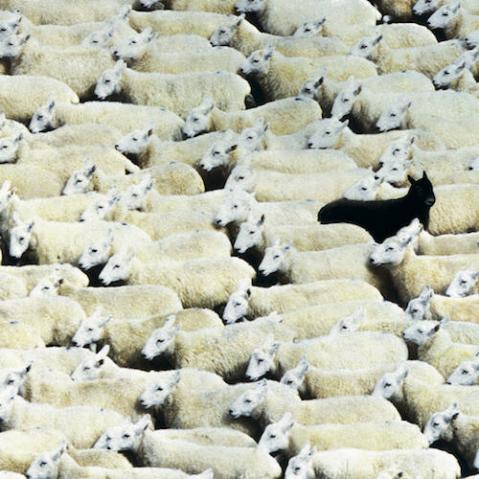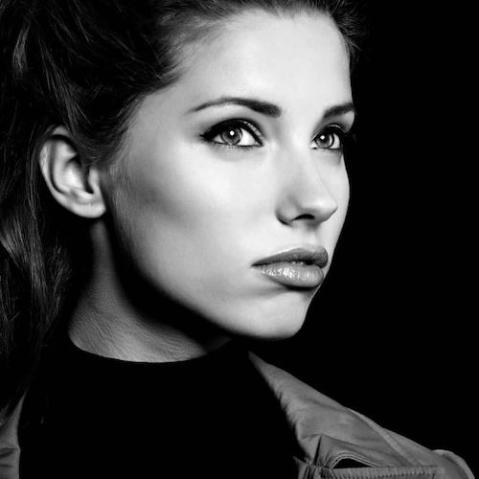The value of spontaneity in portraiture
Children are naturally spontaneous—when they have a thought; they act on it! But as adults we become increasingly cautious and learn not to act on our impulses. Sometimes, some of best decisions that we make are spontaneous ones, and we certainly have more fun when we do something that we have not over-analysed beforehand. The same can be said of portrait photography.

While it is essential to plan, organise and consider what, how and where we are going to shoot, there is always the danger that we are creating something that is over-planned. The top photographers scrutinise every detail of each shot, ensuring that it absolutely matches their visualised concept. But get it wrong and a portrait can look overposed and stilted.
However, there is on occasion something to be said for throwing caution to the wind and asking the model be spontaneous. Not only will this enliven them—having been told where and how to pose for the previous few hours—it should also motivate your creativity.
Anyone who has been asked to pose for photographs for more than a few minutes at a time will know how difficult it is to remain comfortable, relaxed, and with natural expression. Muscles set in a specific pose begin to ache, our facial muscles tense, and the result is an uncomfortable-looking portrait.
At the same time, some subjects can feel self-conscious in front of a camera. A little bit of spontaneity can really help to get the model feeling energized, relaxed and uninhibited in front of the camera.
Asking the model to do something spontaneous—such as jumping, laughing, screaming, going for a walk, kicking some autumnal leaves, splashing in a puddle, or whatever springs spontaneously to mind— will often provide you with natural expressions, poses and mood.
If the model is having fun and being spontaneous, then the viewer feels more relaxed and enjoys observing the portrait. We have all looked at a spontaneous and fun image that has made us smile to ourselves.
A favourite trick of wedding photographers during the time set aside for couple portraits is to ask the bride and groom to take a walk around the gardens of the venue or a favorite local spot. While posed portraits of the happy couple can sometimes be natural and relaxed, all too often they feel slightly inhibited and reserved.
Using a long telephoto lens means that you can hang back at a suitable distance and follow the couple as they talk and walk through flowering gardens, past lakes, under trees and so on. The couple—like a tired model—are often grateful for the break and a bit of time out. After a while, they forget about your presence, and you can get some wonderful candid photography.

A similar trick is to ask the groom and groom’s party to throw their hats in the air after the ceremony. Slightly clichéd it may be, but the client is shown to be having fun and hence loves the images. There is always something intimate about a candid shot too, which adds to their appeal.
But it does not have to be confined to a wedding. Ask your model to go for a walk, do star jumps, climb a tree, blow up a balloon, pull a face—the only limit is your imagination. Make sure though that the subject is comfortable with the activity; don’t make them feel even more self-conscious and, of course, ensure that they are not in any danger! A long focal length lens will help to make the model less inhibited, letting you retain a suitable distance, resulting in more candid and relaxed shots.
In terms of directing the model, the idea is to be spontaneous! However, it might be wise to tell them where to walk and to give an idea of what you’re looking for before they set off. For example, ask them to walk to the far lake and back again via the shady oak tree. Perhaps ask them to do anything spontaneous that comes to mind—ask them to smell a few flowers on the way, or kick the leaves as they pass under the tree. Don’t be too predictive about it, but some loose direction should avoid completely random behaviour. Of course, you have to be vigilant, or risk missing a spontaneous act.
Involving the subject is likely to improve the level of their interaction with the activity. Just doing something different can create an entirely new mood and feel to the shoot, and reveal more of the subject’s personality, which after all is what a good portrait is all about.
From posing and framing, to advanced lighting setups, and reliable post-production and finishing techniques,Photo School: Portrait, by Michael Freeman and Gary Eastwood covers all the essential aspects of quality portraiture. Get motivated by numerous and specific shooting challenges, and be inspired by sample work from fellow photography students, with critical evaluations of the results to improve your understanding of the core concepts.
 Photo School: Portrait
Photo School: Portrait
Michael Freeman and Gary Eastwood
Download the PDF now!
RRP for print edition: £17.99



